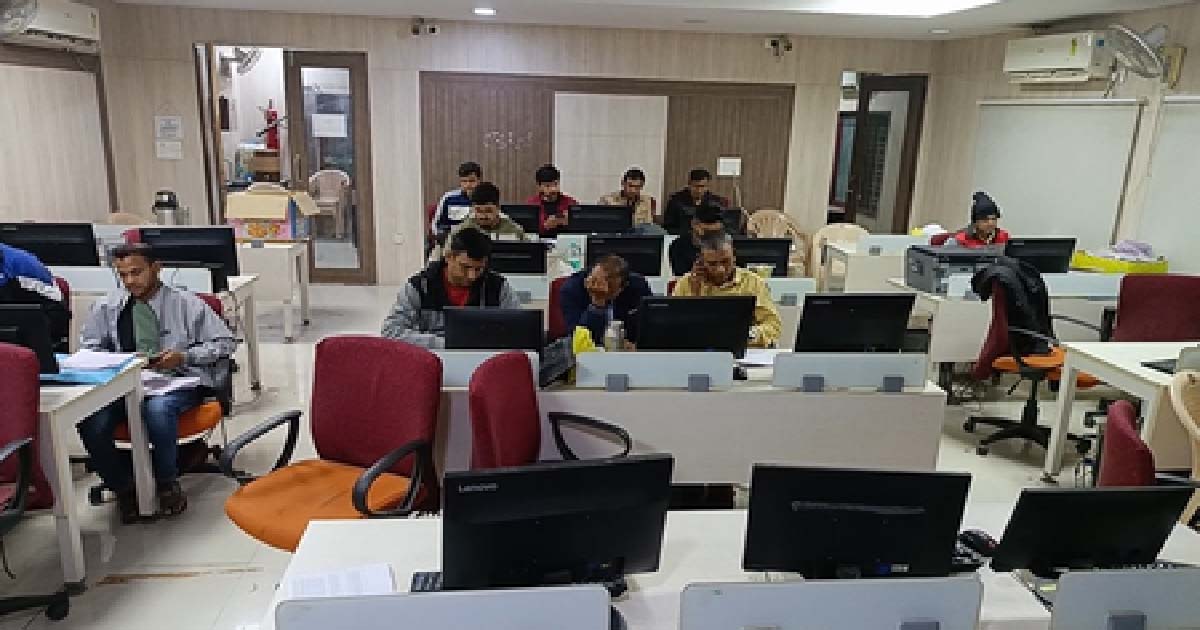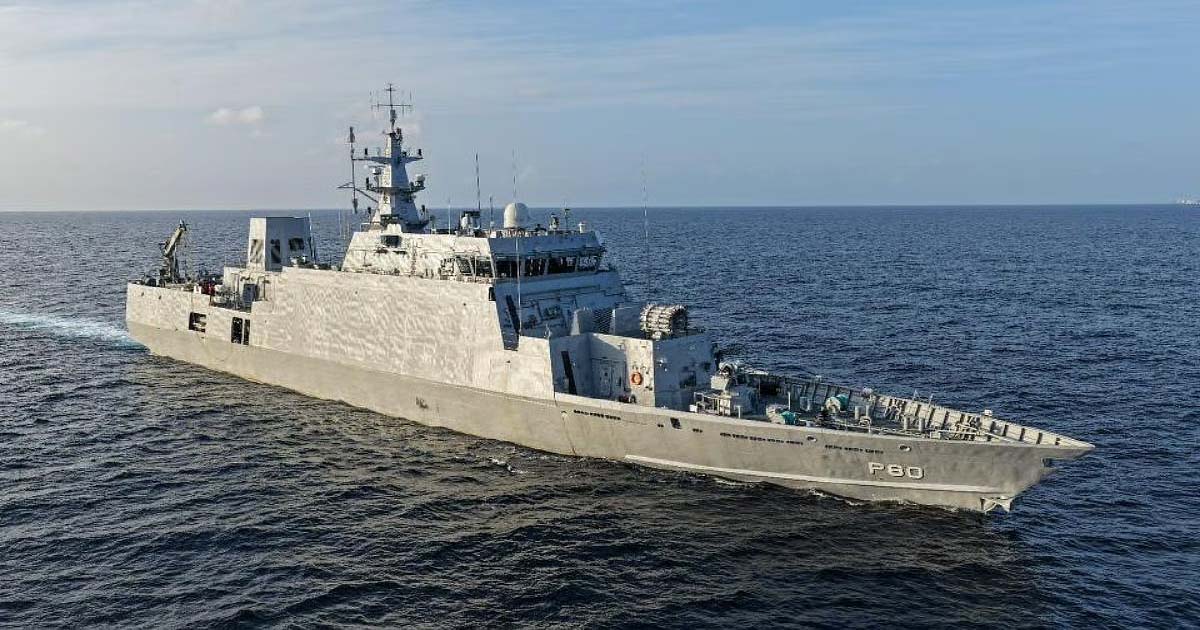National News
Madhya Pradesh: SIR work intensifies in Burhanpur, uploading continues late into the night

Burhanpur, Nov 22: The administration in Burhanpur district, Madhya Pradesh, is working diligently to ensure the timely completion of the Special Intensive Revision (SIR) process. SIR-related tasks are now being carried out both during the day and late into the night to ensure that all forms are uploaded online without delay.
Rajesh Patidar, the Burhanpur District SIR Officer, told Media that the work related to the SIR is steadily gaining momentum in the district. He said that Booth-Level Officers (BLOs) are conducting door-to-door verification, while the office teams continue uploading completed forms until late hours to keep the process on track.
Patidar stated that the administration is making every effort to finish the SIR process in both Assembly constituencies of the district before the prescribed deadline. To achieve this, continuous monitoring and coordinated data entry are being carried out through a team-based approach. With this proactive effort, the administration expects the voter list update to be completed successfully and without any delay.
The BJP has welcomed the clean-up exercise, calling it a step toward ensuring greater transparency in the electoral rolls.
However, the exercise has drawn sharp opposition from several parties. West Bengal Chief Minister Mamata Banerjee on Thursday wrote to Chief Election Commissioner (CEC) Gyanesh Kumar, objecting to the SIR. She claimed that the manner in which the exercise is being imposed on electoral officials and citizens is “unplanned,” “chaotic,” and “dangerous.” CM Banerjee is scheduled to address an anti-SIR rally at Bangaon in North 24 Parganas district on November 25.
Meanwhile, the Election Commission on November 4 launched the second phase of the SIR of electoral rolls in nine states and three Union Territories, covering around 51 crore voters. Booth-level officers have begun distributing enumeration forms to electors as part of the process.
During the enumeration phase, which will continue until December 4, more than 5.3 lakh BLOs will visit households at least three times for the distribution and collection of forms.
After the rally, Banerjee will participate in a protest march at Bangaon. This will be her second anti-SIR rally and protest march, following the first one held in Kolkata on November 4.
In addition to BLOs, 7.64 lakh BLAs appointed by political parties, 10,448 electoral registration officers and assistant EROs, and 321 district election officers have been deployed to conduct the SIR exercise in a smooth, orderly, and voter-friendly manner.
The 12 states and Union Territories where the SIR is being conducted are the Andaman and Nicobar Islands, Lakshadweep, Chhattisgarh, Goa, Gujarat, Kerala, Madhya Pradesh, Puducherry, Rajasthan, Tamil Nadu, Uttar Pradesh, and West Bengal. Among these, Tamil Nadu, Kerala, West Bengal, and Puducherry are scheduled to go to the polls in 2026.
The first phase of the SIR exercise was carried out in Bihar earlier this year, after which more than 68 lakh names were removed from the electoral rolls.
National News
Kalyan Student Suicide Case Update: No Leads Found, Lacks Eyewitness Due To ‘Peak-Hour Crowding’

Mumbai: In the Kalyan student suicide case, the Thane police have intensified the probe and questioned about 10 commuters who were in the same coach of the Mumbai local train; however, no leads have been currently found in the case. The 19-year-old, Arnav Khaire, was allegedly assaulted and threatened by fellow passengers on a Mumbai local train following a Hindi-Marathi language-based argument. Arnav went into severe mental stress, emotional breakdown and later died by suicide at his residence.
When the police questioned the commuters of the same coach of the CSMT-Ambernath train, many claimed that they did not come across any conflict or assault, ‘citing peak-hour crowding.’ In addition to this, the police sources told Media that the CCTV footage was also examined with the help of Kalyan Government Railway Police (GRP) to trace multiple passengers who boarded the local train from Ambernath to Thane. Senior inspector Hemant Gurav of Kolsewadi police station told the daily, “We are still trying to identify other passengers in the coach.”
Apart from speaking to commuters, the report added that the police also sent the victim’s mobile phone to forensic lab to retrieve messages, voice recordings, videos, or calls he made before his death.
Earlier on November 22, the Kolsewadi Police registered a case of abetment to suicide against the unknown individuals who assaulted Arnav inside a local train. The FIR clearly stated that the attack played a crucial role in pushing Arnav towards suicide.
On November 22, Maharashtra Deputy Chief Minister Eknath Shinde spoke with Arnav’s family and assured the family of full government support, immediate investigation, and justice. In addition to this, the Deputy CM assured that until the linguistic extremists responsible for Arnav’s suicide are punished, “we will not remain silent.”
National News
INS Mahe Commissioned In Mumbai: Indian Navy Inducts 1st Anti-Submarine Warfare Vessel; All You Need To Know

Mumbai: A major boost to India’s coastal defence capability came on Monday as the Indian Navy commissioned INS Mahe, the first vessel in the Mahe-class series of Anti-Submarine Warfare Shallow Water Craft (ASW-SWC). The ceremony, held at the Naval Dockyard in Mumbai, was hosted by Vice Admiral Krishna Swaminathan, Flag Officer Commanding-in-Chief, Western Naval Command and presided over by Army Chief General Upendra Dwivedi.
The commissioning marks the arrival of a new generation of indigenous shallow-water combatants, compact, highly manoeuvrable and designed specifically for India’s littoral warfare requirements. Built by Cochin Shipyard Limited (CSL), INS Mahe reflects the strength of the Aatmanirbhar Bharat initiative, with over 80 per cent indigenous content in its design, construction and integration. Navy officials described the vessel as ‘sleek, swift and resolutely Indian.’
INS Mahe’s primary role is anti-submarine warfare in shallow waters, an area where conventional deep-water ships face limitations. With a blend of stealth, firepower and agility, the ship will undertake submarine hunting, coastal patrol and surveillance duties, strengthening security along critical maritime approaches.
Its name pays tribute to Mahe, the historic coastal enclave on India’s Malabar Coast. The ship’s crest features the Urumi, the flexible sword of Kalaripayattu, symbolising agility, precision and lethal grace, qualities reflected in the vessel’s mission profile.
Navy officials emphasised that INS Mahe is a multi-purpose warship, capable of being deployed across a wide spectrum of operations:
Anti-submarine warfare
Coastal defence and maritime security
Underwater surveillance
Search and rescue
Mine-laying
High-precision missions in shallow waters
Its compact 78-metre frame, 2.7-metre draft, 896–1,100-ton displacement and robust water-jet propulsion enable rapid manoeuvring even in tight maritime zones, an increasingly crucial requirement in modern coastal defence.
INS Mahe is powered by a modern diesel-engine and water-jet propulsion system, allowing a top speed of 25 knots and a range of 1,800 nautical miles at cruising speed. It carries 57 crew members including seven officers and is equipped with two RHIBs for rapid response.
With an extremely low acoustic signature, the vessel is engineered to remain undetected while tracking enemy submarines. This stealth advantage is reinforced by advanced sonar systems, making it highly effective in both shallow and variable-depth waters.
The ship’s surveillance backbone is built around two state-of-the-art sonar systems:
1. DRDO Abhay Hull-Mounted Sonar
Continuously monitors underwater surroundings
Detects submarine signatures, mines and artificial objects
Optimised for shallow-water operations
2. Low Frequency Variable Depth Sonar (LFVDS)
Deployed through a cable for deep-water detection
Effective in areas where hull-mounted sonar faces limitations
Long-range, low-frequency scanning for high accuracy
Together, the systems offer round-the-clock underwater surveillance and precise target identification.
INS Mahe is armed with a range of modern weapons, making it a formidable platform for anti-submarine warfare:
12-barrel IRL Anti-Submarine Rocket Launcher
30 mm Naval Surface Gun for defence against small craft and aerial threats
Two triple lightweight torpedo launchers (six ALWT torpedoes)
Anti-submarine mines deployable via mine-laying rails
Two 12.7 mm Stabilised Remote-Controlled Guns for coastal and anti-piracy operations
The combination enables detection, tracking and elimination of hostile submarines and maritime threats across a variety of operational scenarios.
With INS Mahe joining the fleet, the Indian Navy majorly enhances its littoral warfare capability. The vessel will play a vital role in protecting India’s coastal zones, monitoring suspicious submarine activity and contributing to mission-critical operations on the Western Seaboard.
INS Mahe stands as both a strategic asset and a milestone in India’s indigenous defence manufacturing journey, further strengthening maritime security and pushing India closer to naval self-reliance.
National News
High price tag likely factor behind RCB releasing Livingstone: Anil Kumble

New Delhi, Nov 24: Former India captain Anil Kumble believes that Liam Livingstone’s high price was likely a factor in the Royal Challengers Bengaluru’s decision to release him into the IPL 2026 auction pool.
Livingstone played for RCB in their title-winning IPL 2025 season after being bought for Rs. 8.75 crore at last year’s mega auction. However, he had an underwhelming time – scoring 112 runs in eight innings with a strike rate of 133.33, including one half-century, and taking two wickets in nine overs with an economy rate of 8.44.
It would be interesting to see if RCB or any other team ropes him in for the IPL 2026 auction, to be held in Abu Dhabi, on December 16. “Releases are always tough calls. Liam Livingstone is someone I enjoyed working with closely, and he was extremely good for Punjab in IPL 2022, probably his best IPL season. He can change the game single-handedly in just a few overs with his powerful batting.”
“What makes him special is his bowling flexibility; he bowls leg spin to right-handers and off spin to left-handers, plus he’s a good fielder, making him a complete package. Unfortunately, he didn’t have a great IPL season for RCB last year and also missed out on selection for England.”
“Otherwise, I’m sure other franchises would be interested in him. His high price tag was likely a factor in the release. RCB also needs to find backup options, both an overseas fast bowler and an Indian fast bowler to support their main bowling attack of Bhuvneshwar Kumar and Josh Hazlewood. This need for bowling depth might be another reason behind this tough call,” said Kumble, a former RCB skipper, on JioStar.
Saba Karim, former India wicketkeeper-batter and national selector, questioned RCB’s decision to release young batter Swastik Chikara. “It’s a splendid position for RCB to be finally being called as the defending champions. Talking about their auction plans, they can still buy back Liam Livingstone in the mini-auction if he doesn’t go for too high a price.”
“I’m also surprised they didn’t retain Swastik Chikara, who was an excellent buy last season after his prolific performances in the Syed Mushtaq Ali Trophy. I was actually expecting him to get a game, but he didn’t play a single match and now, hasn’t been retained. If RCB wants to strengthen their batting lineup, there are several Indian uncapped batsmen they can target in the auction to build their squad depth for the upcoming season,” he added.
-

 Crime3 years ago
Crime3 years agoClass 10 student jumps to death in Jaipur
-

 Maharashtra1 year ago
Maharashtra1 year agoMumbai Local Train Update: Central Railway’s New Timetable Comes Into Effect; Check Full List Of Revised Timings & Stations
-

 Maharashtra1 year ago
Maharashtra1 year agoMumbai To Go Toll-Free Tonight! Maharashtra Govt Announces Complete Toll Waiver For Light Motor Vehicles At All 5 Entry Points Of City
-

 Maharashtra1 year ago
Maharashtra1 year agoFalse photo of Imtiaz Jaleel’s rally, exposing the fooling conspiracy
-

 National News1 year ago
National News1 year agoMinistry of Railways rolls out Special Drive 4.0 with focus on digitisation, cleanliness, inclusiveness and grievance redressal
-

 Maharashtra1 year ago
Maharashtra1 year agoMaharashtra Elections 2024: Mumbai Metro & BEST Services Extended Till Midnight On Voting Day
-

 National News1 year ago
National News1 year agoJ&K: 4 Jawans Killed, 28 Injured After Bus Carrying BSF Personnel For Poll Duty Falls Into Gorge In Budgam; Terrifying Visuals Surface
-

 Crime1 year ago
Crime1 year agoBaba Siddique Murder: Mumbai Police Unable To Get Lawrence Bishnoi Custody Due To Home Ministry Order, Says Report












